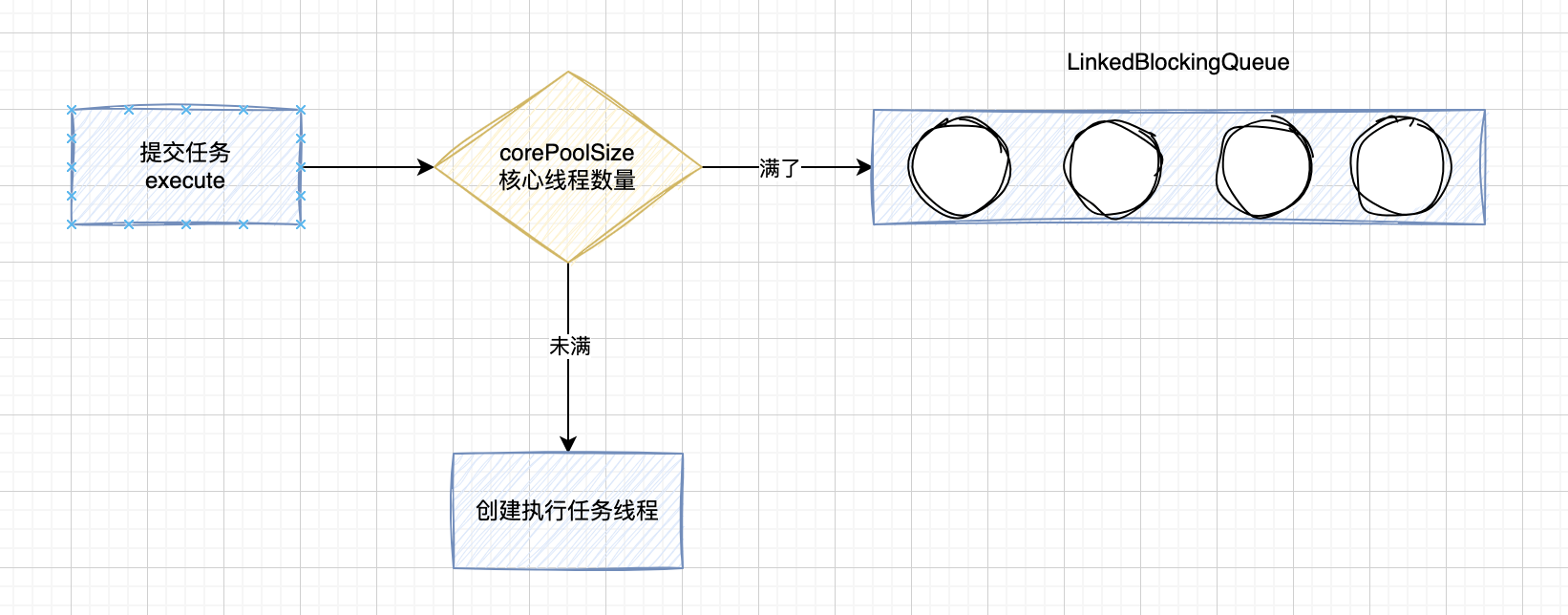四种线程池
Executors 是创建线程池的工具类,比较典型常见的四种线程池包括:newFixedThreadPool 、 newSingleThreadExecutor 、 newCachedThreadPool 、newScheduledThreadPool。
newFixedThreadPool
- 固定大小可重复使用的线程池,corePoolSize = maximumPoolSize
- 以 LinkedBlockingQueue 无界阻塞队列存放等待线程。
- 随着线程任务不能被执行的的无限堆积,可能会导致 OOM
public static ExecutorService newFixedThreadPool(int nThreads,
ThreadFactory threadFactory) {
return new ThreadPoolExecutor(nThreads, nThreads,
0L, TimeUnit.MILLISECONDS,
new LinkedBlockingQueue<Runnable>(),
threadFactory);
}

newSingleThreadExecutor
- 只创建一个执行线程任务的线程池
- 如果出现意外终止则再创建一个
- 个无界队列存放待执行线程,无限堆积下会出现 OOM
public static ExecutorService newSingleThreadExecutor() {
return new FinalizableDelegatedExecutorService
(new ThreadPoolExecutor(1, 1,
0L, TimeUnit.MILLISECONDS,
new LinkedBlockingQueue<Runnable>()));
}
newCachedThreadPool
- SynchronousQueue 是一个生产消费模式的阻塞任务队列,只要有任务就需要有线程执行,线程池中的线程可以重复使用。
- 如果线程任务比较耗时,又大量创建,会导致 OOM。
public static ExecutorService newCachedThreadPool() {
return new ThreadPoolExecutor(0, Integer.MAX_VALUE,
60L, TimeUnit.SECONDS,
new SynchronousQueue<Runnable>());
}
newScheduledThreadPool
- 延迟定时执行,有点像我们的定时任务
- 无限大小的线程池 Integer.MAX_VALUE
- 无限容量的线程池,所以依旧有 OOM 风险
public ScheduledThreadPoolExecutor(int corePoolSize) {
super(corePoolSize, Integer.MAX_VALUE,
DEFAULT_KEEPALIVE_MILLIS, MILLISECONDS,
new DelayedWorkQueue());
}
总结

